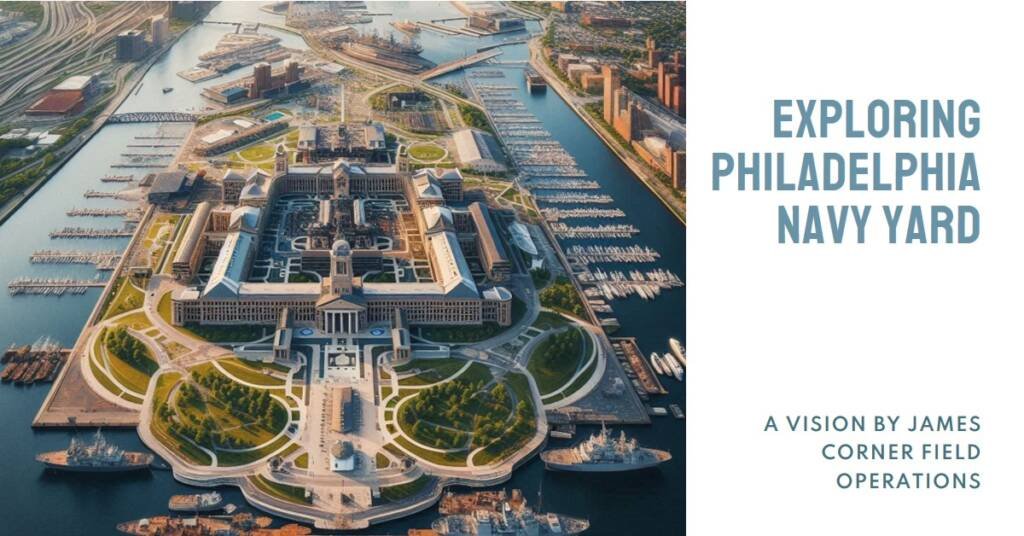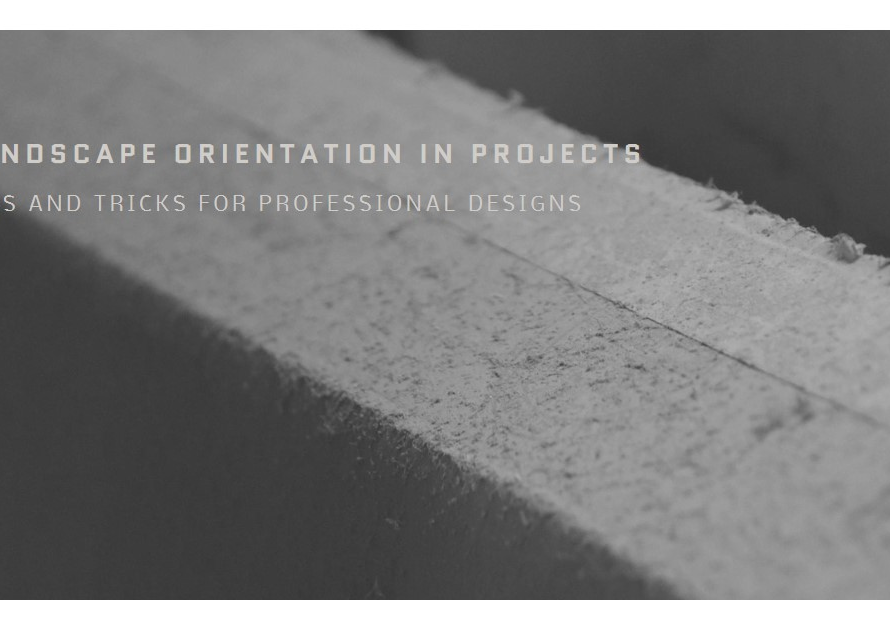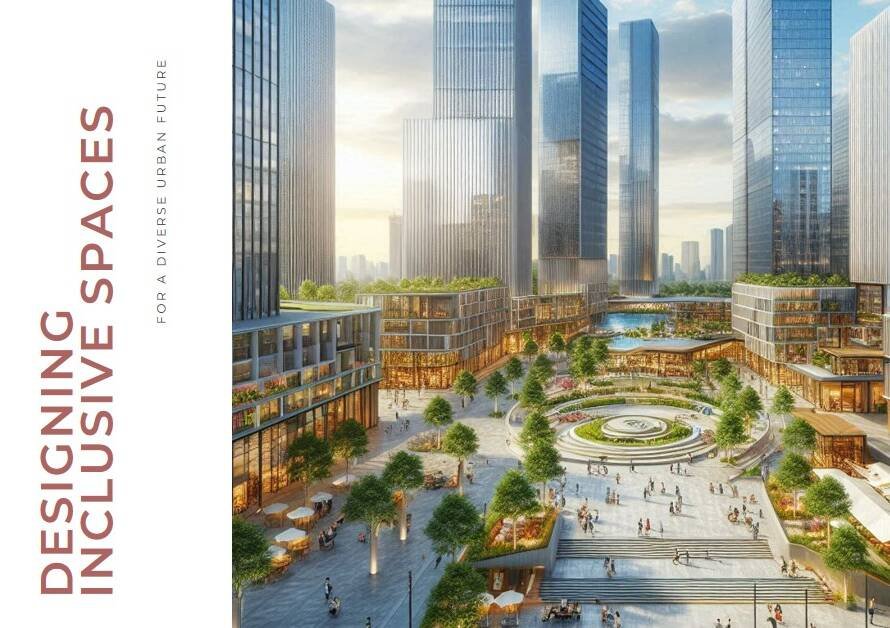
Table of Contents
- Introduction to the Philadelphia Navy Yard
- The Vision of James Corner Field Operations
- Key Design Features of the Navy Yard
- Sustainability Initiatives and Practices
- Economic Impact and Growth Opportunities
- Community Engagement and Cultural Integration
- Case Studies: Successful Projects Within the Navy Yard
- Challenges Faced During Redevelopment
- Future Prospects for the Philadelphia Navy Yard
Introduction to the Philadelphia Navy Yard
The Philadelphia Navy Yard, historically significant as the former site of the Philadelphia Naval Shipyard, has undergone a remarkable transformation in recent years. Established in the early 19th century, this military base was once a hub for naval construction and engineering, playing a vital role in both world wars. Following its closure in 1996, the Navy Yard faced the challenge of revitalization amid shifting economic and urban landscapes. The once bustling industrial site was gradually reimagined through innovative planning and community engagement, steering it towards becoming a vibrant urban space that attracts both businesses and visitors.
The redevelopment efforts, spearheaded by James Corner Field Operations, focus on creating a mixed-use environment that fosters collaboration, sustainability, and a sense of community. The vision for repurposing the Philadelphia Navy Yard emphasizes integrating parks, recreational areas, and commercial spaces, alongside restoring the historical character of the site. This approach positions the Navy Yard as not just a place to work but as a dynamic setting for social interaction, environmental stewardship, and cultural experiences. By embracing the principles of contemporary urban design, the Navy Yard stands as a testament to how former military spaces can be transformed into productive, inviting areas that serve a diverse range of patrons.
Through strategic investments and innovative design solutions, the Philadelphia Navy Yard exemplifies the potential of modern urban redevelopment. It serves as a model for similar urban transformation projects nationwide, illustrating how history can harmonize with the future. As cities grapple with the complexities of urban growth and sustainability, the success of the Navy Yard reinforces the importance of intentional planning, community participation, and stewardship in creating urban spaces that fulfill both aesthetic and functional needs.
The Vision of James Corner Field Operations
James Corner Field Operations, a prominent landscape architecture firm, undertook the redevelopment of the Philadelphia Navy Yard with a vision grounded in blending ecological sustainability and urban functionality. The philosophy underpinning their work is characterized by a commitment to enhancing the urban environment while preserving and integrating natural systems. This dual approach is vital in addressing the diverse challenges posed by urbanization, such as habitat loss and the need for public spaces.
Central to their design principles is the notion of “landscape as infrastructure,” which posits that landscapes can function as both aesthetic spaces and essential civic utilities. This philosophy is evident throughout the Navy Yard redevelopment, where landscapes are not merely ornamental but serve multiple purposes, including stormwater management, biodiversity promotion, and recreational opportunities for the community. By incorporating natural elements into the fabric of the urban space, they foster a resilient environment that responds to both ecological and social imperatives.
Moreover, James Corner Field Operations emphasizes collaboration among different stakeholders, from local communities to governmental entities. This participatory approach ensures that the needs and aspirations of those who will engage with the Navy Yard are central to the design process. Through workshops and dialogue, the firm has effectively harnessed community insights, thereby strengthening the connection between the space and its users.
The result of James Corner Field Operations’ vision is a revitalized Navy Yard where ecological integrity and urban vitality coexist. This redevelopment stands as an exemplar of how landscape architecture can contribute meaningfully to urban renewal, creating environments that are enjoyable, sustainable, and adaptive to the changing needs of residents. The careful integration of green spaces within an urban setting illustrates the potential for harmonious coexistence, highlighting the essential role of landscape architects in shaping resilient cities.
Key Design Features of the Navy Yard
The Philadelphia Navy Yard, revitalized by James Corner Field Operations, showcases a series of innovative design features that play a crucial role in enhancing the urban environment and promoting community interaction. One of the most prominent aspects of the design is the incorporation of expansive green spaces. These areas serve multiple purposes, not only contributing to the aesthetic appeal of the Navy Yard but also providing residents and visitors with much-needed respite from the urban hustle. The integration of native plant species further enhances biodiversity, creating a vibrant ecological landscape that supports local wildlife.
Pathways are another significant design element that enhances accessibility and connectivity within the Navy Yard. These well-planned routes encourage walking, cycling, and other forms of sustainable transportation, making the entire area more pedestrian-friendly. The pathways link various sections of the Navy Yard, facilitating fluid movement and promoting an active lifestyle among users. The thoughtful placement of these routes allows individuals to engage with the environment, encouraging exploration and interaction with the spaces around them.
Recreational areas are thoughtfully distributed throughout the Navy Yard, designed to cater to a variety of leisure activities. These spaces are equipped with amenities such as seating, fitness equipment, and play areas, making them versatile for community use. Not only do they provide opportunities for physical recreation, but they also facilitate social gatherings, contributing to a sense of community among residents. The careful balance of functionality and aesthetics in these recreational zones ensures that they become cherished spaces for enjoyment and relaxation.
Ultimately, the design features introduced by James Corner Field Operations at the Philadelphia Navy Yard work synergistically to create an engaging urban environment. The combination of green spaces, pedestrian pathways, and recreational facilities establishes a unique area that fosters community connectivity and enhances the quality of urban life.
Sustainability Initiatives and Practices
The redevelopment of the Philadelphia Navy Yard, spearheaded by James Corner Field Operations, has set a benchmark for sustainability initiatives in urban planning. Integrating environmentally responsible practices, the Navy Yard aims to create a model for future urban developments. Central to this effort is the use of sustainable materials throughout the construction process. This approach not only minimizes the environmental footprint but also promotes the use of locally sourced resources, thereby contributing to the local economy and reducing transportation emissions.
In addition to material selection, energy efficiency remains a core principle of the Navy Yard’s sustainability strategy. Various buildings within the redevelopment feature advanced architectural designs that enhance natural light usage, reducing reliance on artificial lighting. Implementation of energy-efficient HVAC systems complements this, ensuring optimal temperature control while minimizing energy consumption. The inclusion of solar panels on several rooftops further reinforces the commitment to renewable energy, enabling these facilities to harness natural resources effectively.
The Navy Yard also emphasizes landscape sustainability, incorporating green roofs and bioretention systems that manage stormwater runoff naturally. This not only alleviates the burden on municipal stormwater systems but also enhances biodiversity within the urban environment. Native plant species have been utilized throughout the site to foster a resilient ecosystem, requiring less water and maintenance compared to non-native alternatives. By implementing these practices, the Navy Yard significantly contributes to critical environmental goals, such as reducing urban heat islands and improving air quality.
These sustainability initiatives not only provide immediate benefits but also set a precedent for urban redevelopment projects across the country. By showcasing innovative solutions, the Philadelphia Navy Yard exemplifies a forward-thinking approach in its quest to align redevelopment with broader environmental objectives, thus creating a greener, more sustainable urban environment.
Economic Impact and Growth Opportunities
The transformation of the Philadelphia Navy Yard, led by James Corner Field Operations, has significant economic implications for the surrounding areas and the broader metropolitan region. As an urban redevelopment initiative, the Navy Yard is poised to become a key driver of economic growth, attracting a diverse range of businesses and stimulating job creation. This revitalized space not only serves as a hub for innovation but also positions itself as an essential contributor to Philadelphia’s economy.
One of the immediate benefits of this redevelopment is job creation. The Navy Yard is anticipated to generate thousands of employment opportunities across various sectors, including technology, manufacturing, and service industries. As new businesses establish their presence in the area, they will require a skilled workforce, which will necessitate training and education programs. Such initiatives will not only prepare local residents for these new roles but also foster a robust talent pool that attracts additional enterprises.
Furthermore, the strategic location and modern infrastructure of the Navy Yard present a compelling case for businesses seeking to expand or relocate. Companies are increasingly drawn to urban settings that provide easy access to transportation networks and communities. The Navy Yard’s attractive mix of green spaces, proximity to the waterfront, and innovative design enhances its appeal as an office location, ultimately leading to increased real estate demand and investment in the area. In addition, ancillary businesses such as restaurants, retail stores, and service providers will likely flourish as the locale grows.
In conclusion, the ongoing transformation of the Philadelphia Navy Yard offers a myriad of economic benefits, positioning it as a growth engine for the city. By fostering job creation, attracting new businesses, and enhancing local infrastructure, this redevelopment initiative is creating an environment ripe for sustained economic prosperity. The long-term impacts of the Navy Yard’s revitalization present an opportunity for Philadelphia to emerge as a significant urban center on the national stage.
Community Engagement and Cultural Integration
The redevelopment of the Philadelphia Navy Yard represents a significant case study in community engagement and urban revitalization. By prioritizing local input in design decisions, the project ensured that the voices of residents, businesses, and stakeholders were harmoniously integrated into the development process. Early engagement initiatives included public forums, workshops, and surveys, allowing community members to express their perspectives and needs. This collaborative approach has helped to foster a sense of ownership and pride among local residents, ultimately enhancing the overall success of the project.
One of the pivotal aspects of the Navy Yard’s redevelopment is its focus on cultural integration. Recognizing that urban spaces are more than physical environments, the design has incorporated elements that celebrate the area’s rich history and diverse cultural fabric. Initiatives such as public art installations, performance spaces, and community gardens have contributed to creating a vibrant cultural landscape. These elements not only provide visual appeal, but they also serve as gathering places, encouraging social interaction and cooperation among residents, artists, and visitors.
Moreover, regular cultural events and activities have played a crucial role in fostering community identity. From food festivals featuring local cuisine to art exhibitions showcasing the work of neighborhood artists, these events have created an ongoing dialogue within the community. They celebrate local talents while also inviting external audiences to engage with the Navy Yard. Such interactions enhance the visibility of local culture and promote a spirit of inclusivity. By weaving cultural events into the fabric of the redevelopment initiative, the Philadelphia Navy Yard stands as a model for how urban spaces can be revitalized through community collaboration and cultural significance.
Case Studies: Successful Projects Within the Navy Yard
The Philadelphia Navy Yard has emerged as a significant hub for innovative urban design, showcasing numerous successful projects that illustrate the principles laid out by James Corner Field Operations. One notable example is the Green Infrastructure Project, which integrates sustainable practices into the landscapes of the Navy Yard. This project emphasizes the importance of stormwater management while enhancing public spaces, allowing for natural water filtration that supports the local ecosystem. Through the incorporation of bioswales and green roofs, the Navy Yard exemplifies how urban design can address environmental challenges while enriching community engagement.
Another case study worth noting is the Public Park Development initiative, which transformed a 35-acre waterfront area into a multifunctional public park. This project not only serves as recreational space but also hosts various community events throughout the year. The design includes walking trails, picnic areas, and playgrounds, fostering a sense of community and encouraging healthy lifestyles among residents and visitors alike. The successful integration of art installations and educational programming enhances the overall cultural richness of the Navy Yard, making it a dynamic destination for all.
The Innovation Hub further demonstrates the Navy Yard’s commitment to revitalizing urban spaces. This project focuses on fostering collaboration among startups, established businesses, and thought leaders in technology and sustainability. By designing flexible workspaces and creating networking opportunities, the Innovation Hub attracts professionals and entrepreneurs, stimulating economic growth within the region. Not only does this development reflect the role of urban design in supporting economic resilience, but it also aligns with contemporary trends in workplace environments where adaptability and community are imperative.
These case studies collectively illustrate the practical applications of transformative urban design at the Philadelphia Navy Yard, showcasing how thoughtful design can elevate both environmental sustainability and community interaction.
Challenges Faced During Redevelopment
The redevelopment of the Philadelphia Navy Yard presents a multifaceted array of challenges that have significantly influenced the project’s progression. A primary concern revolves around funding issues, which pose a substantial barrier to the timely completion of various components within the redevelopment plan. Public funding is often limited as urban redevelopment initiatives compete with other community needs, necessitating a reliance on both public and private partnerships to secure necessary financial resources. This challenge emphasizes the importance of creating a robust investment strategy that appeals to a diverse range of stakeholders while ensuring sustainable development.
Another critical obstacle encountered during the revitalization process includes infrastructure limitations. The Navy Yard was previously an operational military facility, and its existing infrastructure required considerable modifications to accommodate new functions and facilities. Aging utilities, insufficient transportation links, and the need for modern amenities posed significant hurdles. The integration of effective transport systems is essential, not only for the movement of goods and services but also for enhancing accessibility for residents and visitors. Addressing these infrastructure challenges necessitates comprehensive planning and substantial investment to ensure the area meets modern urban standards.
Moreover, community concerns have played a pivotal role in shaping the redevelopment trajectory. Engaging local residents in the planning process is paramount, as their insights and feedback can provide valuable perspectives on the community’s needs and priorities. While fostering a sense of ownership among the community is critical, it can also lead to disagreements regarding land use, environmental impact, and gentrification fears. Successfully navigating these concerns requires a transparent dialogue and collaboration among developers, local leaders, and residents to build trust and create a shared vision for the future of the Navy Yard.


Future Prospects for the Philadelphia Navy Yard
The Philadelphia Navy Yard, a hallmark of urban redevelopment, is poised for a future marked by continued growth and innovation. As one of the largest urban revitalization projects in the United States, the Navy Yard’s transformation is not merely a showcase of modern architecture but also a strategic hub for economic development. Various stakeholders, including government entities, private investors, and community organizations, are currently invested in the ongoing evolution of this dynamic space.
One of the key focus areas for the future is the expansion of office and commercial real estate. The Navy Yard aims to attract more businesses that prioritize sustainability and innovative practices, reflecting the growing trend toward green architecture and eco-friendly operations. Future developments may include additional collaboration spaces that foster creativity and combine different sectors that spur economic growth. With plans already in place for new buildings, the Navy Yard expects to facilitate connections that enable entrepreneurs and established companies alike to thrive.
In addition to real estate development, the Navy Yard envisions an increase in partnerships with educational institutions and research organizations, which could lead to the establishment of innovation centers dedicated to technology and environmental studies. These centers will promote collaboration between academia and industry, paving the way for new research initiatives and job creation in emerging sectors. Expanding public transportation options will further integrate the Navy Yard into the urban fabric, making it more accessible to a broader audience and enhancing its role as a community focal point.
Through these initiatives, the Philadelphia Navy Yard is on a trajectory that will not only redefine its identity but also enrich the surrounding community. As the Navy Yard continues to evolve, it stands as a promising model for urban revitalization that balances economic growth with community engagement and environmental sustainability.



